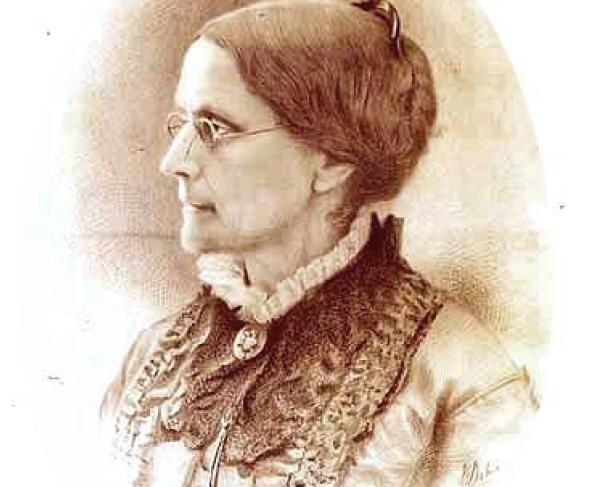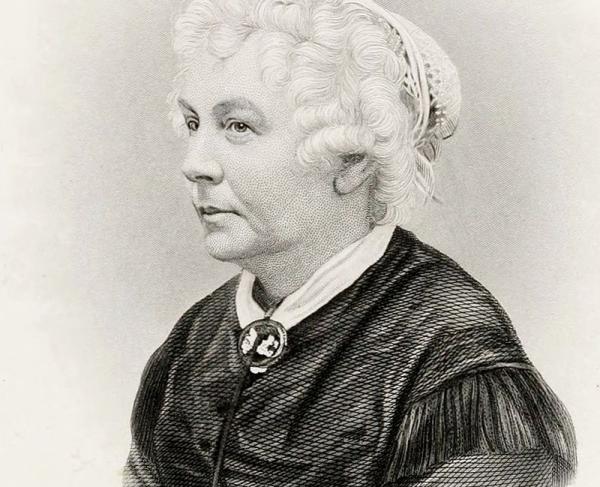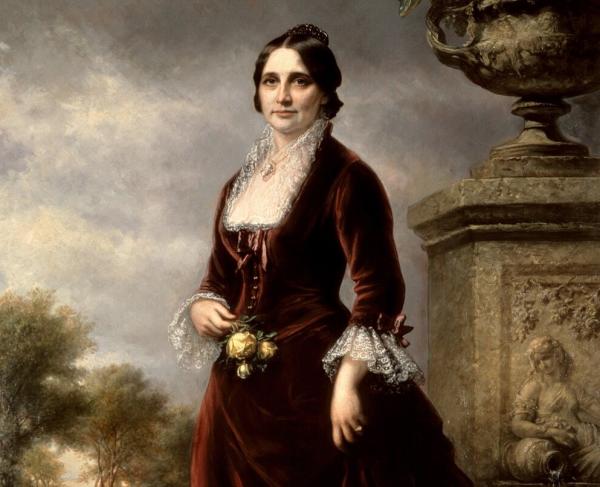Susan B. Anthony

“To forever blot out slavery is the only possible compensation for this merciless war,” wrote Susan B. Anthony in 1861. A dedicated abolitionist and advocate for women’s rights and suffrage, Anthony hoped for a redeeming purpose of the American Civil War, even as she worried that the conflict would slow the interest in conventions or discussions of women’s rights.
Born on February 15, 1820, Susan Anthony grew up in Massachusetts, New York, and Pennsylvania. She added “B” as an initial during girlhood when she and her sisters had a “great craze for middle initials.” Anthony’s family were Quakers, and she grew up encouraged to pursue education, advocate for social reform, and support the abolition of slavery. When the Panic of 1837 brought financial difficulties to the Anthony family, she decided to take a teaching position at a Quaker school.
By 1845, Anthony’s family moved near Rochester, New York, and started farming, and their home became a welcome haven for activists and may have had some connections to the Underground Railroad, helping people escape slavery. Anthony continued educating at female academies during the 1840s, and her frustration over the unequal pay in teaching drew her toward full-time reform work and a public speaking career. She formed professional friendships with other reformers, including Frederick Douglass, William Lloyd Garrison, George Thompson and Elizabeth Cady Stanton. Anthony and Stanton found particularly common interests for the women’s movement, and Stanton wrote many of the speeches that Anthony traveled the country to present during the 1850s.
Although Anthony is most remembered for her work for women’s suffrage, she was also involved in other social reforms, many of which benefited women and women’s rights. She advocated for the Temperance Movement, education reform, equal pay for male and female educators, married women’s property rights, and abolition. On her speaking tours—particularly for the American Anti-Slavery Society—Anthony faced angry mobs and threats of violence. The Civil War (1861-1865) presented challenges for the women’s movement as people focused on questions of abolition, national unity, and military outcomes. Anthony, Stanton, and other women shifted their efforts to meet the moment and formed the Women’s Loyal National League in 1863. The League was the first national women’s political organization within the United States and collected almost 400,000 signatures for an amendment to the U.S. Constitution to abolish slavery.
Following the end of the Civil War and passing of the Thirteenth Amendment which abolished slavery in 1865, Anthony supported citizenship and voting rights for African Americans but expressed concern about limiting the opportunities for women by making citizenship only a privilege for men. She helped to form the American Equal Rights Association which focused on a campaign for universal suffrage, but group split after a few years, debating over the best methods to push for women’s suffrage. In May 1869, Anthony and Stanton formed the National Woman’s Suffrage Association, continuing to call for immediate and universal suffrage. For a short time, Anthony and Stanton published a weekly newspaper, The Revolution, creating a printed forum for women to debate and exchange ideas about suffrage and social reform. Anthony traveled extensively, speaking 75 to 100 times per year and using her honorariums to help fund the organizations she founded or supported. As a single woman, she managed her own finances and could also sign contracts for convention halls, printing, and other outreach efforts under her own name.
In 1872, Susan B. Anthony was arrested for trying to cast a ballot in the presidential election. Her trial gained national attention, and she spoke passionately in her defense, using the trial for a platform to explain her views of women’s rights and suffrage. At the end of the trial, Anthony was fined $100 which she refused to pay.
Later in the 1870s, she collaborated with Elizabeth Cady Stanton and other women to compile what became a six-volume History of Woman Suffrage which successfully preserved primary sources and perspectives of the women’s movement. Anthony traveled to Europe in the 1880s, networking and preparing to create an international women’s organization, which became the International Council of Women in 1888. This organization was recognized by world leaders including, Queen Victoria of Great Britain, Empress Augusta Victoria of Germany, and President and First Lady Grover Cleveland of the United States. Anthony worked behind the scenes to ensure discussions about women’s rights at the World’s Columbian Exposition in 1893. In 1904, Anthony was elected the honorary president and first member of the International Woman Suffrage Alliance, later renamed and still active as the International Alliance of Women.
Anthony continued to write, speak, travel, and help women’s groups organize locally until her death on March 13, 1906. She is buried at Mount Hope Cemetery in Rochester, New York. Susan B. Anthony had worked for nearly a half-century for social reform and women’s rights and had seen significant changes. A few days before her death, she reflected on the progress and remarked about women’s suffrage: “Failure is impossible.” She was right, and thirteen years later in 1919, Congress passed the Nineteenth Amendment to the Constitution, giving women the right to vote.


